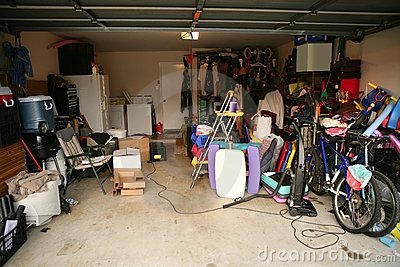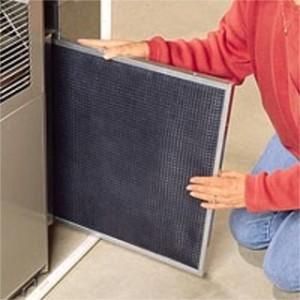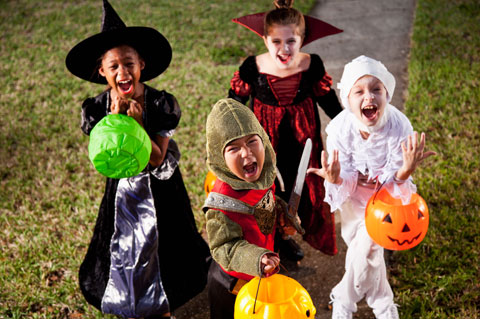by Flagship Staff | Nov 23, 2017 | Blog
 As Americans prepare their Thanksgiving feasts this holiday week, fire prevention experts across the country are busy preparing for the riskiest day of the year.
As Americans prepare their Thanksgiving feasts this holiday week, fire prevention experts across the country are busy preparing for the riskiest day of the year.
Thanksgiving is the leading day for home cooking fires in America, according to the National Fire Protection Association (NFPA). In 2015, U.S. fire departments responded to an estimated 1,760 home cooking fires on Thanksgiving, roughly 3 times the daily average.
Related: Home fire risk more than doubles on Thanksgiving Day
The NFPA also says unattended cooking was by far the leading contributing factor in cooking fires and cooking deaths. One popular but dangerous cooking method can cause serious injury and major property damage if done incorrectly: turkey frying.
This year, QBE North America has released a list of turkey fryer safety tips in preparation for the holiday season.
“Cooking continues to be one of the top ways that home fires are started,” said Mark McCormick, Vice President, Personal Risk Services for QBE North America. “By sharing our expertise, QBE hopes to help more people have a safe and healthy holiday.”
Here are 16 turkey fryer safety tips to keep in mind this holiday season:
Oil dangers
Follow the manufacturer’s instructions to avoid overfilling. Oil can ignite when it makes contact with the burner. Remember the turkey will cause displacement so what may seem like a small amount of oil without the turkey will probably end up being the correct amount of oil.
•Purchase a fryer with temperature controls, and watch the oil temperature carefully. Cooking oil that’s heated beyond its smoke point can catch fire. If you notice the oil is starting to smoke, turn the fryer off immediately.
•Do not dispose of oil down the sink drain.
Related: Here’s what you need to know about fire safety during the holidays
Setting up your fryer
•Keep outdoor fryers off decks, out of garages, and a safe distance away from trees and other flammable (even non-flammable) structures.
•Make sure the turkey is thawed and completely dry before cooking. Any ice or water that mixes into the hot oil can cause major flare-ups.
•Be mindful of the weather. Never operate a fryer outdoors in the rain or snow.
•Always have the fryer on a level surface. Avoid moving the fryer once it is in use and wait for it to cool before moving it.
•Leave 2 feet between the tank and the burner when using a propane-powered fryer.
Related: 25 U.S. cities with the highest risk of home fires
Using the fryer
•Never leave the fryer unattended while heating, in use, or cooling down.
•Turn off the burner before lowering the turkey into the oil. Once the turkey is submerged, turn the burner on.
•Wear the proper safety equipment: goggles to shield your eyes and oven mitts to protect your hands and arms.
•Keep a grease-rated fire extinguisher close by for emergencies.
•Don’t stuff the turkey before frying, and avoid water-based marinades to reduce the chance of flare-ups.
•If you have a flare-up, don’t use a garden hose to put out the fire. Use your grease-rated fire extinguisher.
Other tips
•Keep children and pets away from the fryer at all times.
•Once the frying has finished, carefully remove the pot from the burner, place it on a level surface, and cover it to let the oil cool overnight before you dispose of it.
Related: Fire prevention: 5 potential fire risks in your home

by Flagship Staff | Nov 21, 2017 | Blog
Now that fall is officially here, it’s time to prepare your home for the cold weather like putting on the storm doors, cleaning your gutters, and tuning up the furnace. And don’t forget your garage! Did you know most garage fires occur in January and February?
According to U.S Fire Administration, each year there are 6,600 garage fires in homes that result in an average of 30 deaths, 400 injuries, and $457 million in property loss.
Electrical malfunction is the leading cause of garage fires. These fires start because of shorts in wires, damaged wires, and overloading electrical outlets. Garage fires can spread farther, go undetected longer, and lead to more injuries and dollar loss than fires that originate in other areas of your home.
Wendy Wagner, senior personal lines underwriter will share some safety tips for your garage or detached outbuilding.
Safety Tips
– Store oil, gasoline, paints, propane, and varnishes in a shed away from your home.
– Keep items that can burn on shelves away from appliances.
– Plug only one charging appliance into an outlet.
– Keep the garage tidy and remove clutter.
– When powering or charging appliances, avoid using an extension cord.
– Avoid using carpets or rugs on the garage floor.
– Do not fill portable gasoline containers inside your garage.
– Install a heat alarm, rather than a smoke alarm, in your garage. The heat alarm will sound if the temperature rises too high. Smoke alarms in garages can sound because of a change in temperature and humidity, as well as dust, fumes and insects. Heat alarms are not affected by these conditions.
– Do not use or install solid-fuel burning devices (wood, pellet, coal) in garages, workshops, or detached outbuildings and anywhere gasoline and other flammables vapors may be present. (Per NFPA code 211, location of Appliances 12.2.4 solid fuel burning appliances shall not be installed in any garage.)
Following these easy steps is a sure way to keep your home and possessions safe throughout the year!

by Flagship Staff | Nov 10, 2017 | Blog
With the end of daylight savings time, it will be more difficult to have fun in the sun. During the week, our light will now have to be enjoyed from an office, factory, or school window. However, that doesn’t mean you can’t remain active outdoors.
Recently, I rode to work early in the morning when it was still dark. I was surprised at the number of pedestrians walking on our local biking/walking trail who weren’t wearing lights or reflective clothing. The pedestrians ranged in age from young schoolchildren to the elderly. Fortunately, I had a very bright headlight, so I could see the pedestrians and adjust my speed and path accordingly. A lack of reflective clothing or lights puts pedestrians at risk.
According to the National Highway Traffic Safety Administration (NHTSA), 4,743 pedestrians and 726 bicyclists were killed in crashes with motor vehicles in 2012. In addition, 69% of accidents occur in the dark.
Here are some safety tips to keep you and your family safe after dark.
1. Wear reflective clothing. Many different kinds of reflective materials and clothing are available and vary in price. From vests and wristbands, to reflective tape, all can help you remain visible when you’re outdoors after dark.
2. Buy basic reflectors for your kids. If your kids walk to school, buy some inexpensive reflectors to attach to their backpacks. While this may not be cool, a reflector can significantly increase their chance of being seen. Also, consider buying reflective zipper tags.
3. Invest in a quality headlight and taillight. If you plan to ride your bike to work or for pleasure, make sure you have a quality headlight and taillight. You may purchase them individually or as a set, and they range in price. If you’re riding in the city where you’re aided by streetlights, a headlight with a flasher mode is important. If you ride on a bike trail, the amount of lumens your headlight produces is critical. What’s a lumen? Simply put, the more lumens, the brighter the light.
When I bought my first light, I bought a set. The headlight was 22 lumens with a flash mode, high beam, and low beam. The taillight had four LED lights that provide visibility up to 4,000 feet. What I quickly learned is that the headlight was great for city riding, but wasn’t bright enough for riding on a dark bike trail. Therefore, based on a recommendation from a friend, I bought a headlight that produces 220 lumens. This light is good for dark trail riding.
4. Walk with a flashlight. Frequent injuries occur because of tripping or falling on uneven or cracked sidewalks. In addition, if you’re walking with a pet, a flashlight can help prevent your pet from stepping on a sharp object.
5. Light up your pet. Taking your dog for a nighttime walk isn’t just enjoyable, it’s often necessary. Collars and leashes that are reflective or light up are available. A light-up leash is great if you walk after dark and encounter other pedestrians.
6. Resist wearing headphones. While the trend is to wear headphones while walking or running, it’s better if you don’t wear them. This will keep you more aware of your surroundings and can help you sense danger.
7. Walk against traffic flow. If possible, always walk on the sidewalk; however, if a sidewalk isn’t available, walk against the flow of traffic. This will help you see what’s coming toward you and will help you get out of the way if it appears you’re not visible to the driver. A bicyclist, on the other hand, should never go against the flow of traffic.

by Flagship Staff | Nov 7, 2017 | Blog
Shorter days, blowing leaves, and cooler temperatures are reminders that winter is coming. If you’re like me, you’re scrambling to get your “To Do” list completed. Raking leaves, painting house trim, and cleaning out flower beds are just a few of the tasks I have remaining.
In addition to outdoor activities, don’t forget about the items inside your home that need to be inspected before the snow flies. If you haven’t had your furnace inspected, now is the time to schedule that appointment. To learn more about the benefits on an inspection, visit my blog “Four benefits of a furnace inspection.”
It’s also the time to change your furnace filter. Do you change your furnace filter according to the recommended interval? Do you buy the cheapest filter you can? Do you know what a furnace filter is and how it works?
The purpose of a furnace filter is to keep contaminants out of your blower fan. Contaminants include hair, pet dander, dust, allergens, and other things that are sucked into your air return ducts.
Here is some information on selecting and installing the right replacement furnace filter for your home and family.
1. Many different shapes and sizes. When you arrive at the section in the store where furnace filters are sold, you’ll be out of luck if you don’t know the appropriate size. Especially in bigger stores, filter size and selection can be overwhelming, preventing you from taking a guess.
The size of a furnace filter is based on width, length, and thickness. For example, the size of my furnace filter is 16”x20”x1”. If you recently purchased a new home or had a new furnace installed, check your owner’s manual to determine the correct size. A filter that’s the wrong size won’t fit or stay in place after installation.
After you figure out the correct size, consider writing the number on your furnace filter cover so you can see the size at a glance.
2. Determine the right filter for your household. When it comes to purchasing furnace filters, there are a few options to consider. The options are:
– Flat disposable filters. These filters are very cheap and are made of fiberglass. Their job is to protect your HVAC system from large dust particles.
– Pleated filters. These filters are made of polyester or cotton paper sheets, which traps more particles/contaminants.
– High Efficiency Particulate Air (HEPA filters). These filters are the best at removing the most particles from the air flowing through your HVAC system. However, due to their thickness, it may cause your system to work harder. Before buying this type of filter, check with your owner’s manual to see if this type of filter can be used. If you suffer from severe allergies, you may want to have a separate air filtration system installed in your home.
Lastly, make sure you check out the Minimum Efficiency Reporting Value (MERV). The scale ranges from 1 to 16. The higher the number, the greater the percentage of contaminants that are captured with each pass.
3. Installation. After you have selected the appropriate filter for your home, it’s time to install it. Make sure your thermostat is turned off so the furnace is not running. Also, consider shutting off the power. My furnace has a switch that I can turn off while doing the installation. If yours doesn’t have a switch, consider turning off the power at your circuit breaker.
4. Point the arrow in the right direction. You’ll find an arrow on the filter frame. Always place the arrow facing towards the furnace.
5. Replacing your filter. For maximum effectiveness, experts recommend you change your filter once every three months. You may want to consider changing it more frequently if you’re:
– Remodeling
– A pet owner or
– A smoker.
To learn more, check out Home Depot’s “Air Filters Buying Guide”.
Do you have any tips you’d like to share? I’d love to hear your thoughts; please share them in the box below.

by Flagship Staff | Oct 30, 2017 | Blog
Before you know it, kids in costumes will be roaming your neighborhood on a mission to fill their bags with goodies. While this is a fun tradition, it’s important to keep your home and yard safe so your Halloween visitors stay safe, too.
Here some tips to keep neighborhood trick-or-treaters safe.
1. Tighten lose handrails and floorboards. If trick or treaters will be going up stairs to your front door, make sure hand rails are secured and loose floorboards are tightened. Kids wearing costumes may have trouble moving up and down the stairs and will rely on a handrail. In addition, if there are pumpkins or other decorations on your stairs or porch, it may be wise to remove them.
2. Remove low hanging tree branches. Make sure any trees that are close to your sidewalk or driveway are adequately pruned so the ghosts and goblins can safely navigate.
3. Mark raised or uneven surfaces. In colder climates, winter weather wreaks havoc on driveways and sidewalks. If concrete surfaces in and around your yard are raised, mark them with florescent paint so little princesses don’t trip. If uneven pavers lead up to your front door, rope off the section that could cause them to trip and fall.
4. Remove yard debris. Cold temperatures and strong winds or rain can take leaves off trees in a hurry so rake up those leaves and remove yard debris. The shortest route to your front door may be through your yard. Wet leaves, tree branches, and decorative items can be hazardous to a Storm Trooper’s health.
5. Light up your property. If your community’s trick-or-treat hours are after daylight, make sure your outside lights are working. Now is a good time to replace burned out bulbs. Consider using even brighter bulbs, as long as they meet the recommended wattage. Don’t rely on magical wands or light sabers to light on your property.
6. Keep your pets in a safe place. The constant ringing of the doorbell and the large number of visitors may stress out your pet. Keep pets in a bedroom, away from all the noise and commotion. And don’t forget: Chocolate can be deadly to pets!
Do you have any tips you’d like to share? I’d love to hear your thoughts; please share them in the box below.
 As Americans prepare their Thanksgiving feasts this holiday week, fire prevention experts across the country are busy preparing for the riskiest day of the year.
As Americans prepare their Thanksgiving feasts this holiday week, fire prevention experts across the country are busy preparing for the riskiest day of the year.



